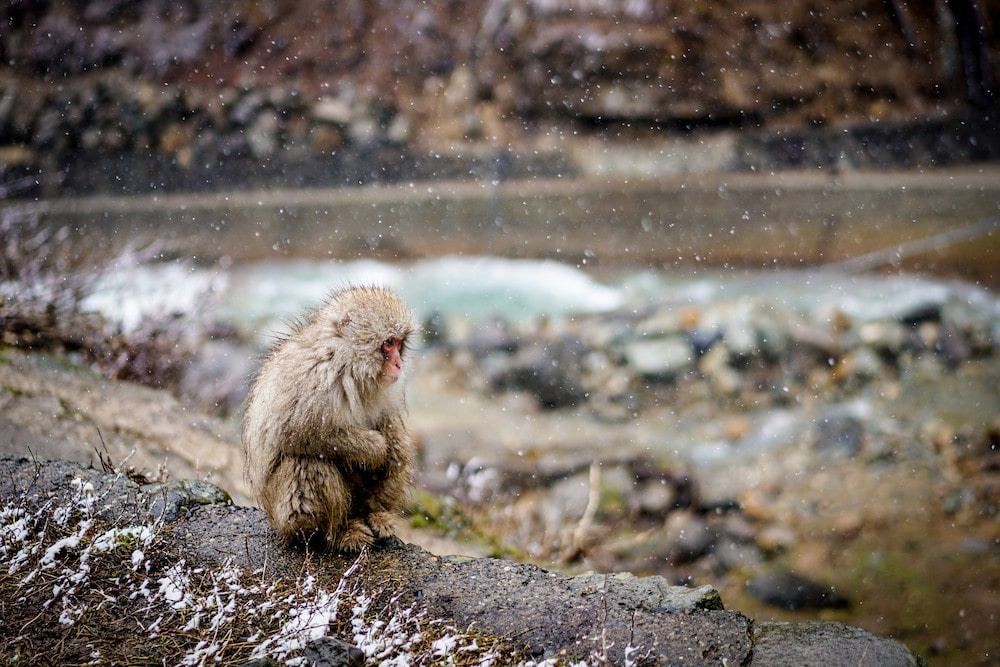If you are an animal lover, zoologist, aspiring veterinarian, or anyone interested in the allure of the great apes and their dietary habits – welcome! If you have ever wondered, “What Do Apes Eat?“, then you’ve come to the right place.
What do apes eat?
Apes are mostly herbivorous but will also eat small insects such as termites, insects, spiders, larvae, and even small birds.
Apes eat:
- Fruits (the apes’ preferred food!)
- Leaves
- Flowers
- Seeds
- Bamboo shoots
- Stems
- Termites
- Insects
- Larvae
- Spiders
- Small Birds
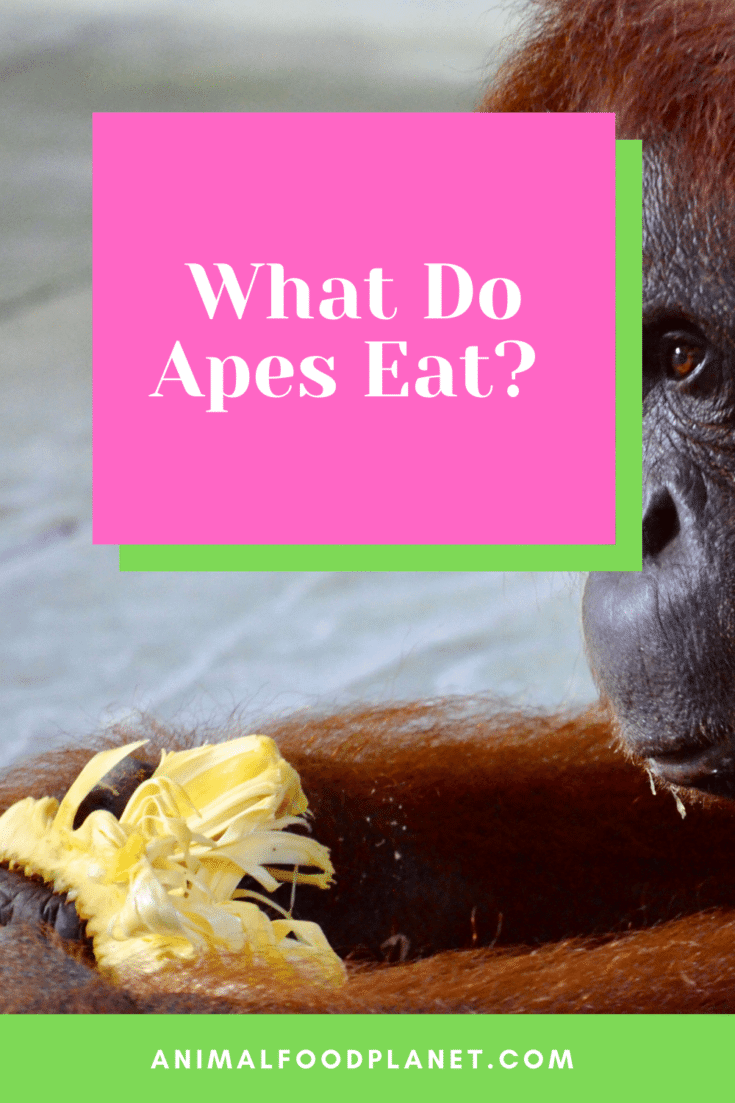
What Do Apes Eat?
WHAT YOU NEED TO KNOW ABOUT APES
Extant great apes or hominoids are collective groups of incredibly intelligent primates who thrive within their accustomed genus groupings called tribes. Each tribe lives within its own socio-specific shrewdness donning its own traditions and eco-factors.
Tribes of eight taxonomic families are within four genera or classifications. Each tribe’s diet may also differ slightly according to its genus specifications or sub-species and seasonality.
To relinquish any doubt right off the bat, and to the surprise of those who are unfamiliar, great apes are not monkeys.
Apes are not only much larger than the monkey but are more reflective of human traits than monkeys.
Apes also do not have tails or heightened arboreal tenancies which would be beneficial for increased dietary survival.
Great apes include but are not limited to orangutans, gorillas, chimpanzees, Bonobo, and African great apes.
Not every ape will enjoy the same diet. But let us first have a broad overview of foods apes might enjoy. Later, we will break down the food habits of the different species and will have a closer look at what foods you might typically find on each apes food menu.
Discovering unusual dietary habits along with typical dietary habits and behaviors is a huge part of the fun of getting to know more about these amazing creatures.
The question, “What do apes eat?”, along with additional conversations regarding specific environmental elements can lead to exciting adventures into a world where few often get the chance to explore. So let us now have a closer look what the different ape species
Tropical Forests: An Ape’s Full-Time Restaurant and Resort
Tropical forests are an ape’s livelihood, sustenance, and shelter. These forests provide perfect ecosystems and habitats for apes to thrive. Approximately 90% of apes are born and raised in these lush, green gardens which assures plenty of food to go around.
In turn, the seed-seeking pollinating, seed-dispersing apes nourish these tropical spaces for continual or renewable food resourcing.
Man-made destruction or scarring of tropical forests can deeply affect the ape’s existence and co-habitation with others in the wild.
WHAT DO ORANGUTANS EAT?
Gibbons and orangutans, while also diversified into several different species, live in southeastern Asia with gibbons being the smaller arboreal species.
Orangutans are the largest species with significant body volume and weight capacities.
With male orangutans weighing between 175-200 pounds, they don’t often find swinging from tree-to-tree high on the orangutan’s fortuitous foraging meal plan.
Females and younger orangutans, on the other hand, can manage a leaning-style of arboreal movement on sturdy branches due to a discount in body weight.
Kudos to this orangutan team effort pulling together for the good of all. For, imagine how much food it requires to fill up such a hefty mass of muscle, bone and fur.
The orangutan must spend a decent amount of time foraging for food in order to keep its massive body working like clockwork. This tribe seems to make it work.
So the Orangutans diet mainly consists of:
- Fruits (the orangutan’s favorite dish)
- Flowers
- Bark
- Honey
- Termites
- Ants and other insects
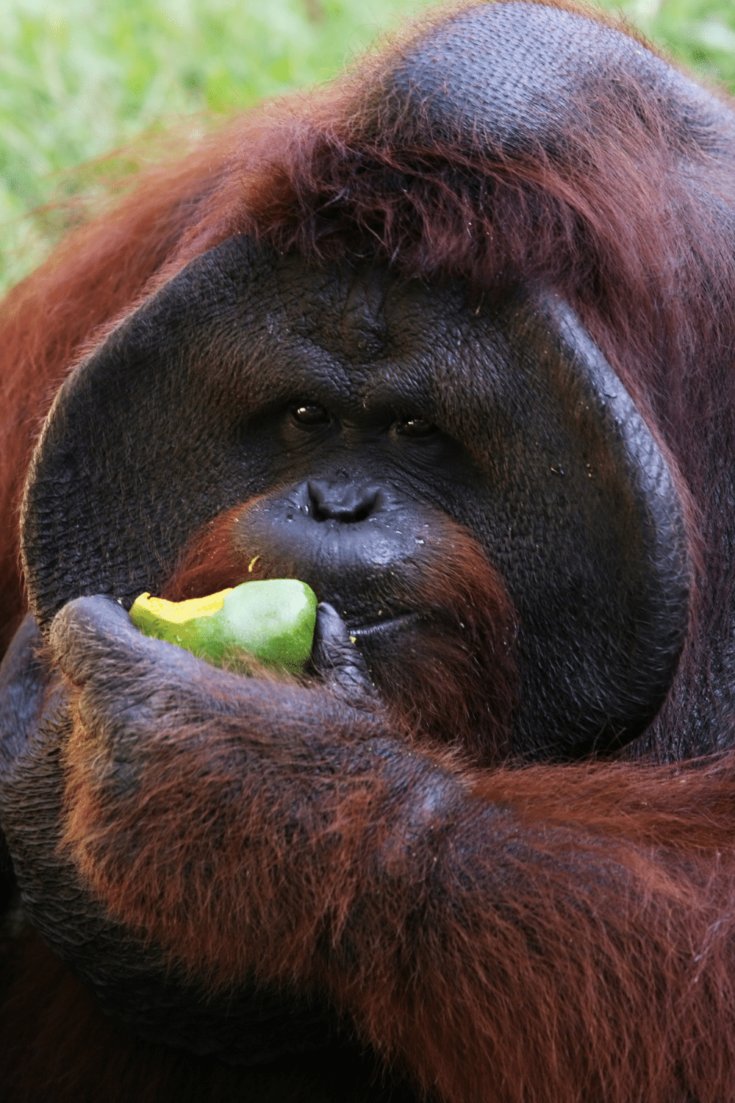
Orangutans love eating fruit
WHAT DO ORANGUTANS EAT IN THE WILD?
When living in the wild, ape habitats must include plenty of foliage, fruits, nuts and leaves at a minimum. These necessities are mostly found in the jungles and forests where vegetation is rich.
Of course, every ape has his or her preferences. But, a large percentage of an orangutan’s favorite meals consist of fruit. In fact, it isn’t unusual for a day’s hunt to reward appetites with about 90% of an orangutan’s fruit favorites.
Who would guess that anything closely related to a cheesy, garlicky sweet fruit would entice those of the wild-kingdom side? Then again, don’t knock it until you’ve tried it, could be a fitting response. This strong-smelling fruit from the Durian tree offers acquired deliciousness in high carbohydrate and caloric form – perfect for the hungry ape constantly on the foraging-go.
WHAT DO ORANGUTANS EAT IN CAPTIVITY?
Even in captivity, orangutans enjoy durian fruit, figs, flowers and honey. Apparently, these sweet-tooth options satisfy even the pickiest of orangutans. Not to forget the protein portions of an orangutan’s diet, bird eggs, nuts and seeds are also tasty morsels for strengthening muscles and satisfying hearty appetites.
The Lighter Side of Lunch
- Ants
- Termites
- Insects
- Tree bark
These abundant additions are perfect for those foraging days of smaller meal discoveries. Don’t be surprised to see a mid-day nap or two, to boot. Foraging is hard work!
HOW DOES THE GIBBONS FOOD MENU LOOK LIKE?
With gibbons and orangutans in close proximity to the other’s species and foraging markers, there are also similar dietary markers. Hopefully enough to go around for everyone.
So, what do these apes eat? While gibbons may not nest, are not as large as orangutans and are generally referred to as one of the lesser apes, gibbons eat much of the same food items as orangutans. Flowers, fruits, leaves and insects serve up a plethora of hearty meals. Fruits slathered in fresh vegetation offers a densely nutritious food source and some happy stomachs.
Tasty Snacking or Mealtime Pleasures
This omnivorous ape loves food from mineral-rich soils that deliver nutrient-dense nourishment and flavor. Such examples are:
- Spiders
- Leaves
- Ants
- Fruits
- Invertebrates
- Vertebrates
As a ferocious fruit-loving ape, the gibbons love berries, liana fruit, figs, and just about any other small, sweet fruit. They tend to enjoy splitting the difference between these delectable fruits, vines and shoots, and insects. There isn’t a better waste-not-want-not primate on the planet. Nothing in its natural feeding habitat goes to waste.
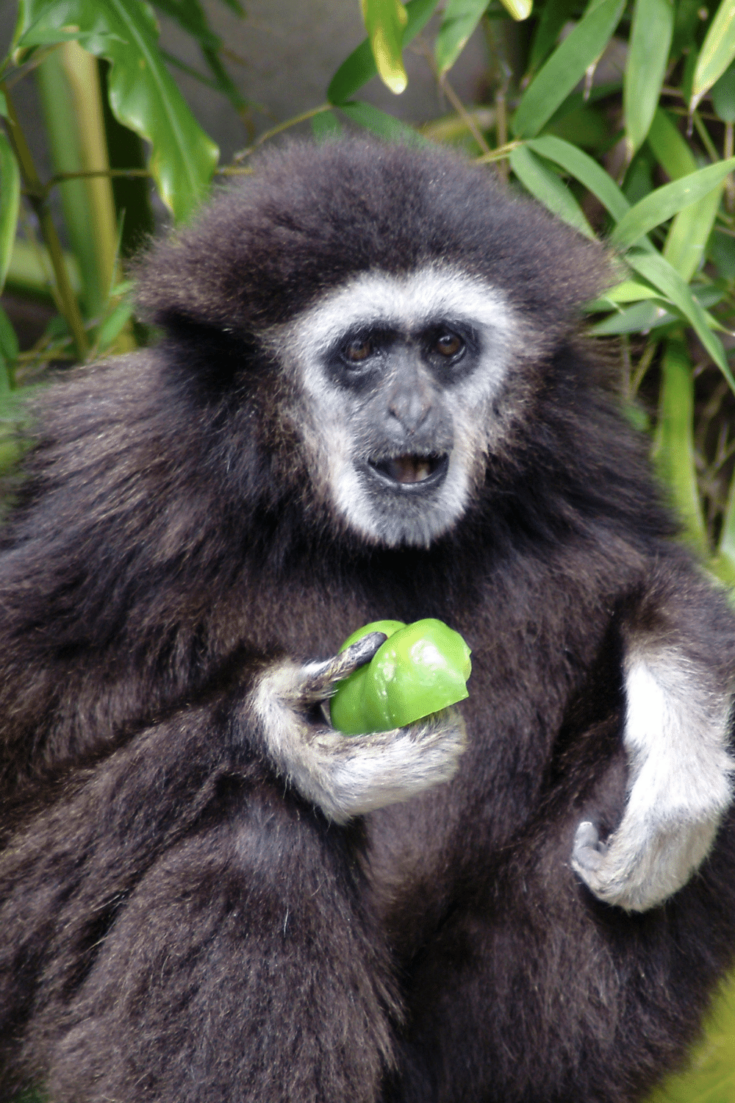
Gibbons are omnivorous apes and love eating fruits as well as vertebrates and invertebrates among other food
ARE GORILLAS EXPRESSIVE?
Gorillas are the largest primates. Aren’t they an expressive species? Beautiful, yet powerfully expressive, these ground-dwelling, South African inhabitants have a mostly herbivorous taste for all things green and tasty. Their taste bud preferences certainly don’t match up with their formidable appearance.
With almost human-like notoriety, gorillas touch the very psyche of our human hearts and souls because of their unexpected expressions of behavior and emotions. Don’t put moments of acceptance, humor, sadness, love and even laughter out of the realm of possible gorilla-like surprises.
If these elements are possible and happening on a regular basis, what is to stop the gorilla from sharing his homemade fruit roll-up with you or I? This creature is a phenomenal example of sheer amazement.
WHAT DO GORILLAS EAT?
So, what do apes eat, specifically the gorilla? The gorilla ape eats what he wants. All kidding aside, the African gorilla loves to munch. Favorite munchies include mostly vegetarian hors-d’oeuvres that pack a punch of plant power like bamboo shoots, stems and fruits. Of course, ant larvae, the caviar of gorilla-cuisine can’t be overlooked as quite the delicacy. Ants and termites are a very close second and third.
But, think about the amount of foraging this voracious creature and his family members require. Forests indeed make the most sense for a gorilla tribe’s sustenance. There must be oodles of food resources to satisfy a gorilla family’s ongoing hunger. A tribe can consist of just a few members to over 40 members.
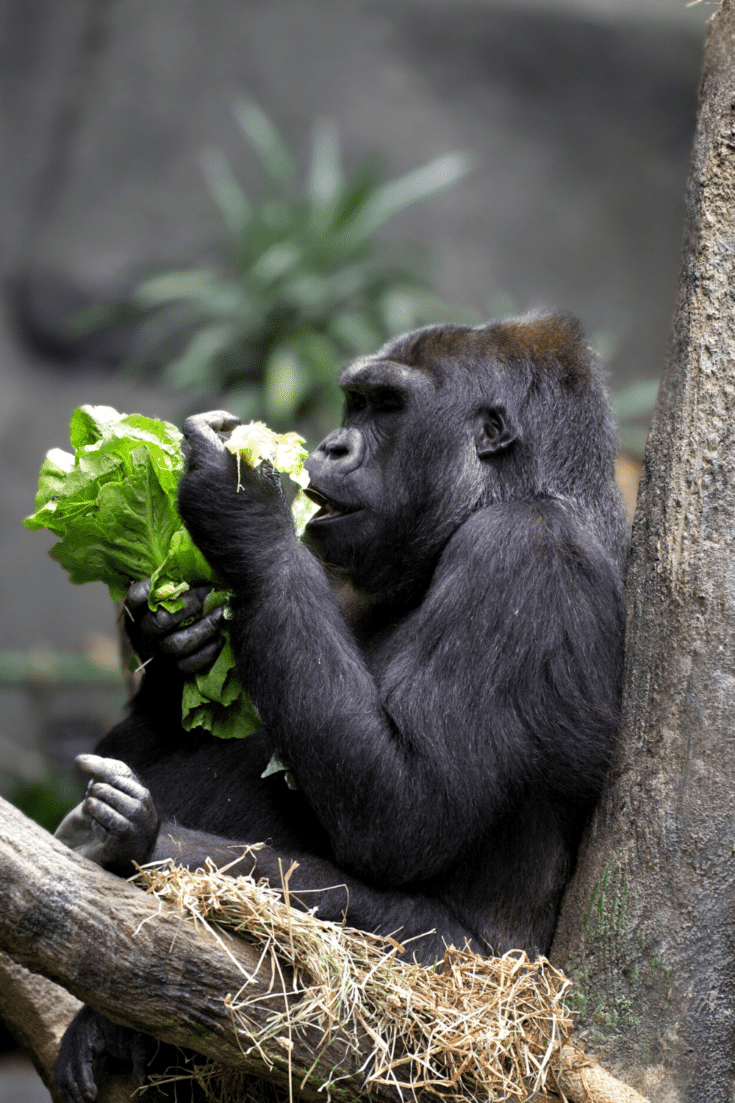
Gorillas are mostly herbivores and love eating everything green
Tough Bamboo: A Gorilla Favorite?
One of the most impressive food sources is bamboo. Most of us have seen the bamboo shoots that can grow massively and in tall regard. These shoots are fibrous and nutritious. They are certainly a time-consuming snack, too.
Bamboo is the perfect resource for these larger family tribes as they are exceptionally beneficial to natural ecosystem’s survival and rejuvenation.
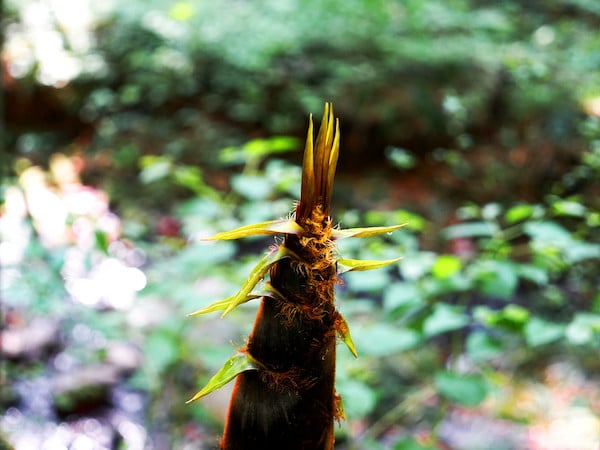
In Japan, the bamboo shoot is reverently regarded as the “King of Forest Vegetables” due to its invaluable food and medicinal purposes.
The gorilla doesn’t have to know the details of the history of bamboo, though. He just “knows”. That knowledge has kept him alive for eons.
ISN’T THERE A NEWER ORANGUTAN SPECIES?
Observed in the 1930s and again in the late 1990s, a new orangutan discovery was made furthering studies that embarked on valuable information of orangutan and forestry perspectives.
As recently as the year 2017, a team of scientists of international stature made the announcement that this discovery is an official confirmation of a new great ape species named the Tapanuli orangutan. With only 800 or fewer of these tree-dwelling creatures in existence, this species is officially now the rarest of all of the great apes.
From North Sumatra, Indonesia, the Tapanuli orangutan has lived a quiet existence, secluded from other orangutan species for 10,000-20,000 years.
What Do Tapanuli Orangutans Eat?
The Tapanuli orangutan has a very similar diet to that of the other great apes, eating leaves, fruits and insects. These apes are also seed dispersers helping to maintain their forest habitats. Without them, the species and the forests would die.
What are Other Tapanuli Orangutan Mealtime Favorites?
What other mealtime favorites do the Tapanuli orangutan enjoy? Food hunts begin at dawn’s first light. If a male decided to remain with the female and their offspring, he will separate from the female and her babies during foraging, widening the hunting space. Otherwise, many prefer to live in solitary after mating season is over, thus relying on their own impressive botanical prowess.
The Tapanuli orangutan’s diet isn’t all that unusual from other apes, with the exception of these savory choices:
- Saplings
- Buds
- Pine Cones
- Caterpillars
WHAT DO CHIMPANZEES EAT?
Chimpanzees are giving a lot of thought about the quality of food they are eating according to Purdue University.
The chimpanzee’s diet consists of:
- Fruit
- Leaves
- Roots
- Insects
- Vertebrates
- Stalks
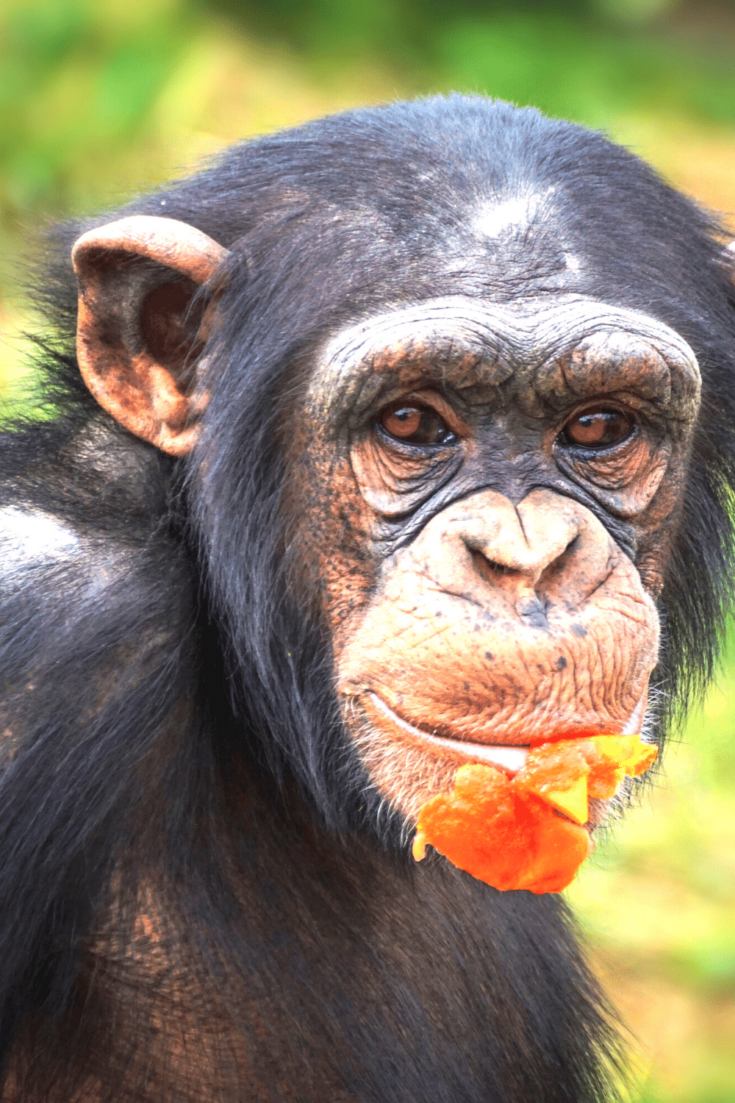
Chimpanzees are predominately vegetarians
TOP-PREFERRED PRIMATE FOOD CHOICE
Among herbivores and omnivores alike, what would a primate’s favorite food be? While there may be little surveying going on about this question, the likelihood of selecting one food source, in particular, could weigh heavy where an ape’s stomach is concerned.
What is it and why? This particular food that provides highly beneficial carbohydrates, sugars, fiber, vitamins and minerals would be the lowly fig.
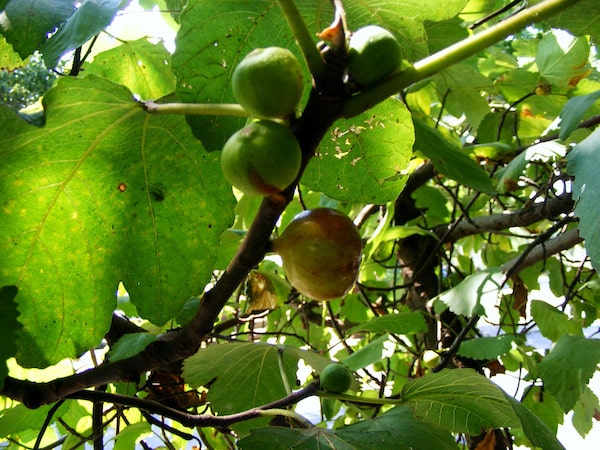
Primates love fruit. They especially love sweet, tender and juicy figs. Thankfully, figs are also found in many tropical locations and are primary food sources many in the animal kingdom rely on for sustenance.
Where Does the Fig Come From?
The fig is the fruit of the Ficus tree. These mighty trees dwell in highly tropical areas and can grow to 30-40 feet tall. The well-adapted Ficus tree responds successfully to unpredictable light sources. This allows fruit-bearing capacities to evolve and expand in densely propagated forests and jungles or sunnier spots. This adaptation makes it ideal for tree-loving and ground-loving primates to thrive.
Has the Fig Made an Impact on the Ape’s Evolution?
How has the fig impacted the ape’s evolutionary eating habits? The ape, like other creatures, certainly have gained benefit from eating the fig and similar fruits. According to the INTERFACE FOCUS journal, hand sensitivity and dexterity changes in apes may very well have contributed to the ape’s dietary progression.
Repetitive hand and finger manipulation of figs and other fruits could have allowed for an increase in higher quality foods and nourishment.
Natural fruit selection between primates is not always created equally. Therefore, quality selection was not always a given for each species, partially due to manual dexterity opposition. That said, many a primate have lived long and healthy lives through instinctual foraging methods such as bite testing, squeezing, plucking and food colors recognition.
With 20% of figs not showing color changes, these tried and true foraging methods are critical.
LAST BUT NOT LEAST: IT’S NOT NICE TO FOOL MOTHER NATURE
When it comes to great food, gorillas know their stuff. They know what they like. Gorillas are also quite intelligent – rarely buying into nature’s commercial offerings that try to pass as delicious. With sugar being the main source of satisfaction for large gorilla brains, the fig is right up there.
Mother Nature, being quite a provider decides to allow a little taste-test option to be added to the menu. A taste-test with a mutated twist. Introducing a genetically mutated red plum-resembling berry called the Pentadiplantra brazzeana, nicknamed l’oubli which means forgetfulness. Fortunately, these intelligent apes weren’t going to play anyone’s fool.
Typical fruit sweetness gorillas prefer comes from sugar. In the case of the l’oubli, this genetically mutated fruit’s sweetness was not a production result of actual sugar; but of a production of brazzein, a sweet-tasting protein that gorillas simply do not taste as strongly as true fruit sugars.
Not only are apes remarkable creatures; they too have an uncanny ability to eat healthier than even some of our human friends. Smart.
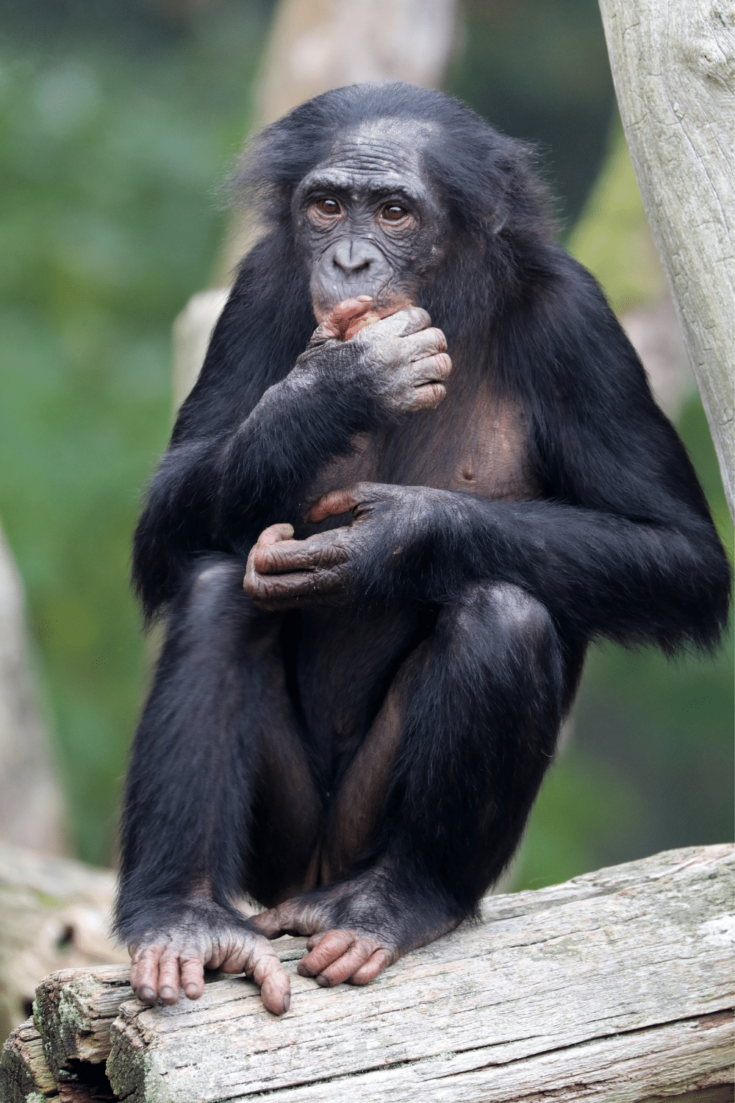
Bonobos love fruit but will also eat leaves, flowers honey, bark as well as fungus
FREQUENTLY ASKED QUESTIONS ABOUT WHAT DO APES EAT
Who is in charge of the gorilla family for leading the family or tribe to food?
The most dominant male holds the title of being in charge of the other members of the family. This male will retain this position for years.
What does the name “orangutan” mean?
The name means “people of the forest”.
How much food does a gorilla eat in one day?
A male gorilla can eat up to 40 pounds of food daily. Its very large stomach is designed to handle the bulk and fiber from the food eaten.
Where can I go to help primates?
Find out how to volunteer by traveling abroad where primates of all kinds need loving, human attention at Gooverseas.

